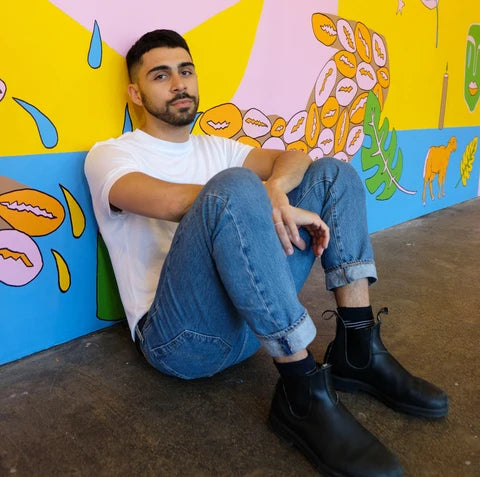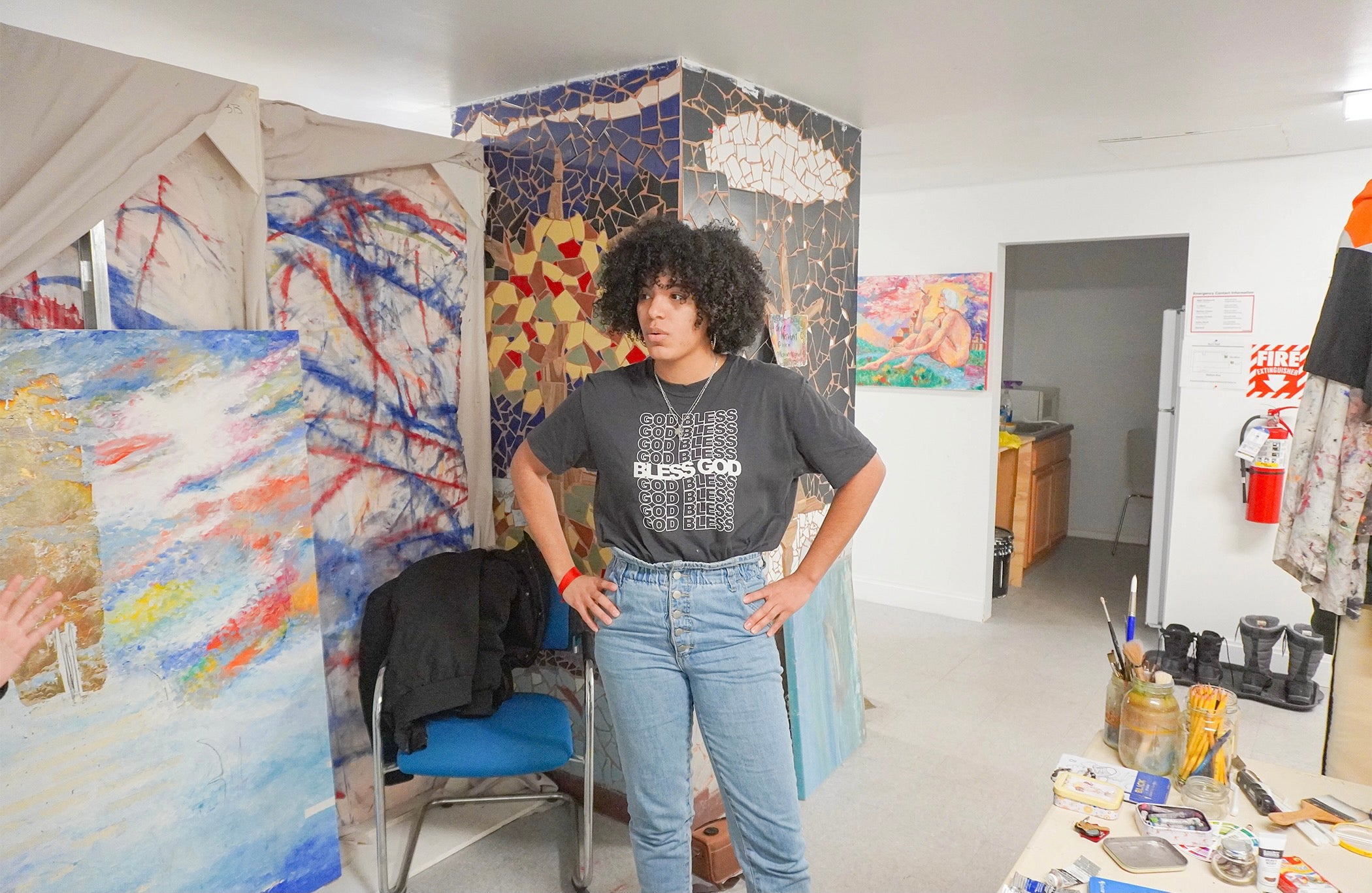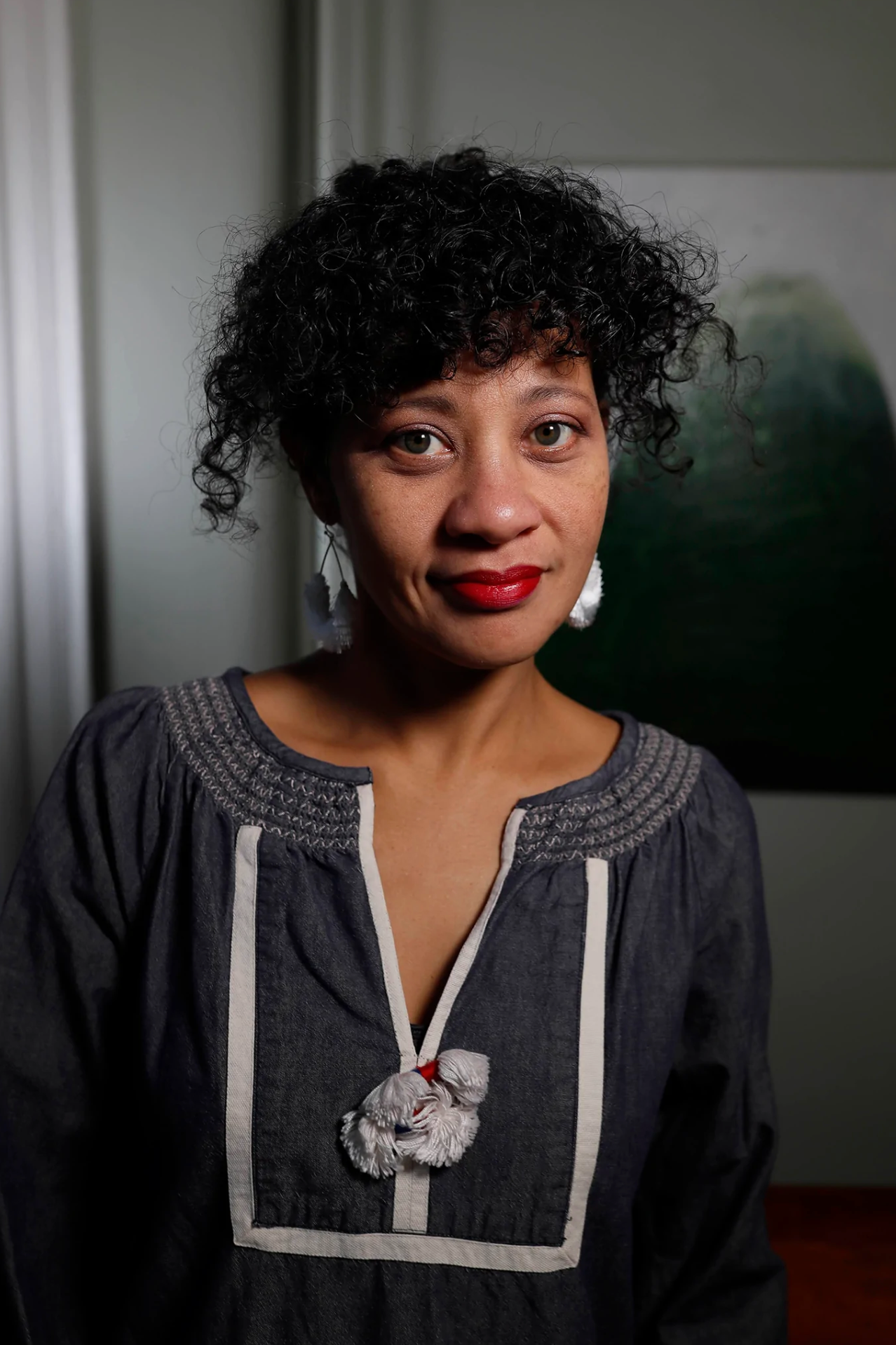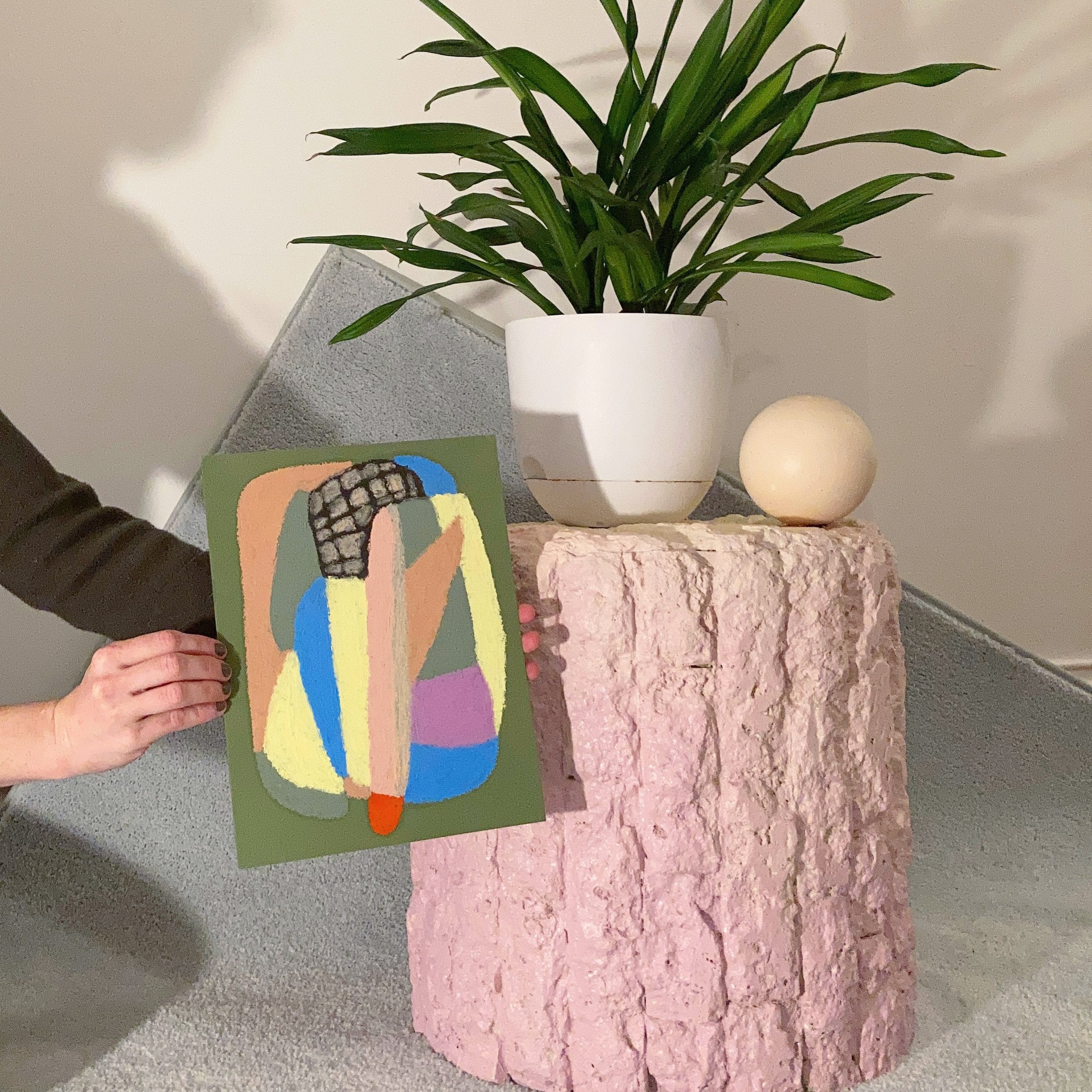No Products in the Cart
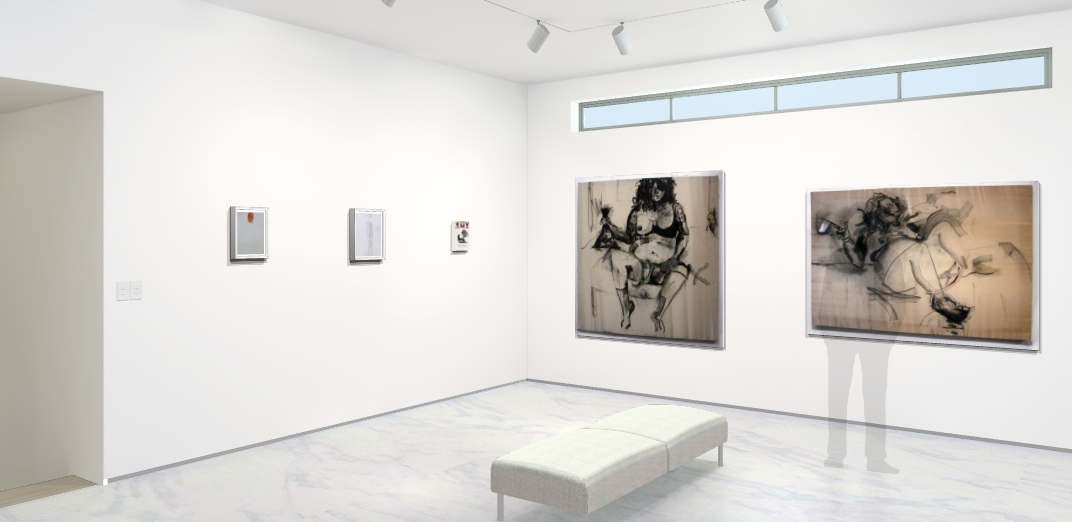
Unruly Hairs, Unruly Bodies
[Click title to view]
A Curina Virtual Exhibition: October 10 - November 15, 2020
Participating artists: Amanda Ba, Cory Feder, Esteban Jimenez Guera, Gabriella Moreno, Daniel Morowitz, Michelle Selwa, Gyan Shrosbree, Darryl Smith

In celebration of cold weather layers - i.e no more shaving - Curina presents an exhibition on the long contested territory that is hair and its connotations about animality, gender, subculture, and race. As a rare hairless species, the placement and design of the hair we do have is one of the visual markers we immediately focus on and naturalize. So it deserves that much more reevaluation.
Thread 1: Hair or Fur?

(Top) Amanda Ba, I Miss My Dog
(Bottom) Daniel Morowiz, Wolf in Sheep's Clothing
Do you ever wonder how animals probably think we’re so weird for being mostly raw and hairless but, like, except for the top of our bodies? Hair becomes one of the constructed ways through which we distinguish ourselves from animals. And the main way of doing so is by determining which parts we’re allowed to have hair and where we’re not - it’s normal for everyone to have head hair, men are encouraged to let armpit hair grow, women shouldn’t have leg hair etc...
Also Consider...Mary Douglas, Purity and Danger

Considered one of the most seminal texts in anthropology, Purity and Danger examines how different cultures draw distinctions between order and disorder based on context: “substances that cross the body’s boundaries are signs of disorder and may easily become pollutants. Hair attached to our heads is one thing, but hair clogged in the shower drain after a shampoo is waste”. Think of how the common swearword "F***k" can mean vastly different things based on timing and its location in a sentence. Therefore, even hygiene is not an objective property but a value judgment based on how we think things are supposed to be.
Mary Douglas mentions examples of "feminine" things - hair, childbirth, menstruation - being perceived in many societies as contaminating. Elaborate rituals were developed surrounding these events so that pollution could be contained, for example, by quarantining a girl on her first period or putting ribbon fences around a birthing woman. Note that this does not necessarily mean they all discriminated against women. These disorderly moments were seen as powerful as much as they were disruptive, since order and disorder, male and female have are mutually dependent.
What should be noted, however, is that this stigma persists even in modern society, in our reluctance to discuss periods and period products or female illnesses, hidden under the slight veil of medical language. We are more superstitious than we think, simply because we are social animals.
Thread 2: Whose Hairstyle?

(Top) Esteban Jimenez Guerra, Gazes; Expectations; and Through Me
(Bottom) Darryl Smith, Θεά μετά διαδήματος (Goddess witha a diadem); and ΜΕΛΕΤΗ: Εἰς τὸ βλέμμα τῆς Μέδουσας (Study: To Medusa’s gaze)
Even in the hair limited to the top of our heads, different styles are associated with different genders, ethnicities/races, and cultures. It’s one of the things you notice most about a person as you focus on their faces during conversation - there are psychology studies about how adults are much more sensitive about what’s on and surrounding faces than other parts of the body.
Also consider... In 2010, Chastity Jones was rescinded from her job offer after refusing to cut off her locs. The Equal Employment Opportunity Commission (EEOC) filed a lawsuit in her behalf only to be dismissed by the court.
Along with fashion (see LA "Zoot Suit Riots"), hair is one of the most visible sites of racial oppression. Institutions like school, the police, companies, and law use hair to identify who belongs or does not belong to the majority and actively deny them visibility. You might be reprimanded by school dress codes. Pointed out by police officers at protests. And like Chastity, denied a job offer. We've only recently made strides acknowledging this problem on the legal front with California's CROWN Act (Create a Respectful and Open Workplace for Natural Hair) and New York's criminalizing of hair discrimination both in 2019.
Sometimes hair discrimination works in subtler ways. The lack of media representation of natural hair makes many Black children grow up thinking they need to straighten, braid, or modify their hair to fit beauty standards. The Natural Hair Movement has made hope-inducing progress in the last decade, not only advocating products fitting needs specific to natural hair but educating people on different Black hairstyles and etiquette (don't just go touching box braids!)
Thread 3: Long Hair, Wild Girl

(Top-right) Cory Feder, Jam Page 9
(Bottom-left) Gabriella Moreno, Boys Always Compliment Your Dimples
Long locks of hair have long been associated with femininity. There is unspoken pressure to keep oneself feminine via the length of hair, but at the same time there is equal pressure to keep the hair well kempt and orderly. “Wild” hair has traditionally symbolized lack of self-discipline or a state of madness.
Also consider...
While in theory many cultures associate long hair with feminine beauty, there are equally many exceptions like
Medusa, with hair literally made of snakes.

Caravaggio, Medusa (1595 – 1598, Uffizi Gallery, Florence)
Without easy access to haircuts (are you listening, quarantine?), our male ancestors mostly had long hair. It was only during the Industrial Revolution in Europe that scientists started arguing that long hair is unsanitary (refer back to Mary Douglas).
In fact, long hair was even a point of pride. Confucians saw it as an act of valuing and preserving what your parents gave you at birth, a sign of loyalty. It was so important that, at being forced to wear a short “Western” hairstyle in 1895, Korean literati organized a massive uprising against Japanese occupation. "Cut my throat before cutting my hair", they chanted.

Thread 4: Subculture - Really Isn't Just A Phase

Michelle Selwa, Nelson (Manipulated), Model (Unknown) and Fergus (Live)
Of course, negative connotations have also been resisted against and reappropriated. Most famously, hippies grew out their hair to resist conforming to the idea of being “productive members of society”. Later in the 80’s, punks would again use hairstyles to rebel against the hippie ideal of naturalism by dying hair in unnatural, neon colors or moussing them up in gravity-defying mohawks.
Thread 4: Braids, Threads, Beads

Gyan Shrosbree, Fringe and Gorgous
Like how hair is seen as a fashion item, other means of bodily ornamentation are often seen as “feminine” and “excessive”. On the other end is the “masculine” minimalist aesthetic that champions a look of functionality and logic. Artists push back against this norm by bringing tactility back to art, using media like textiles, jute, beads, and glitter that not only invite touch but involve the artist’s own multisensory experiences in making.
Also consider...Mira Dayal, Anagen (exhibition)

"ANAGEN : the active phase of the hair growth cycle that precedes catagen and telogen, that is marked by rapid division and differentiation of cells in the lower portion of the hair follicle and by lengthening of the hair shaft, and that typically lasts between two to six years
NOTE: At any given time, approximately 80 to 90% of hair follicles are in anagen."



